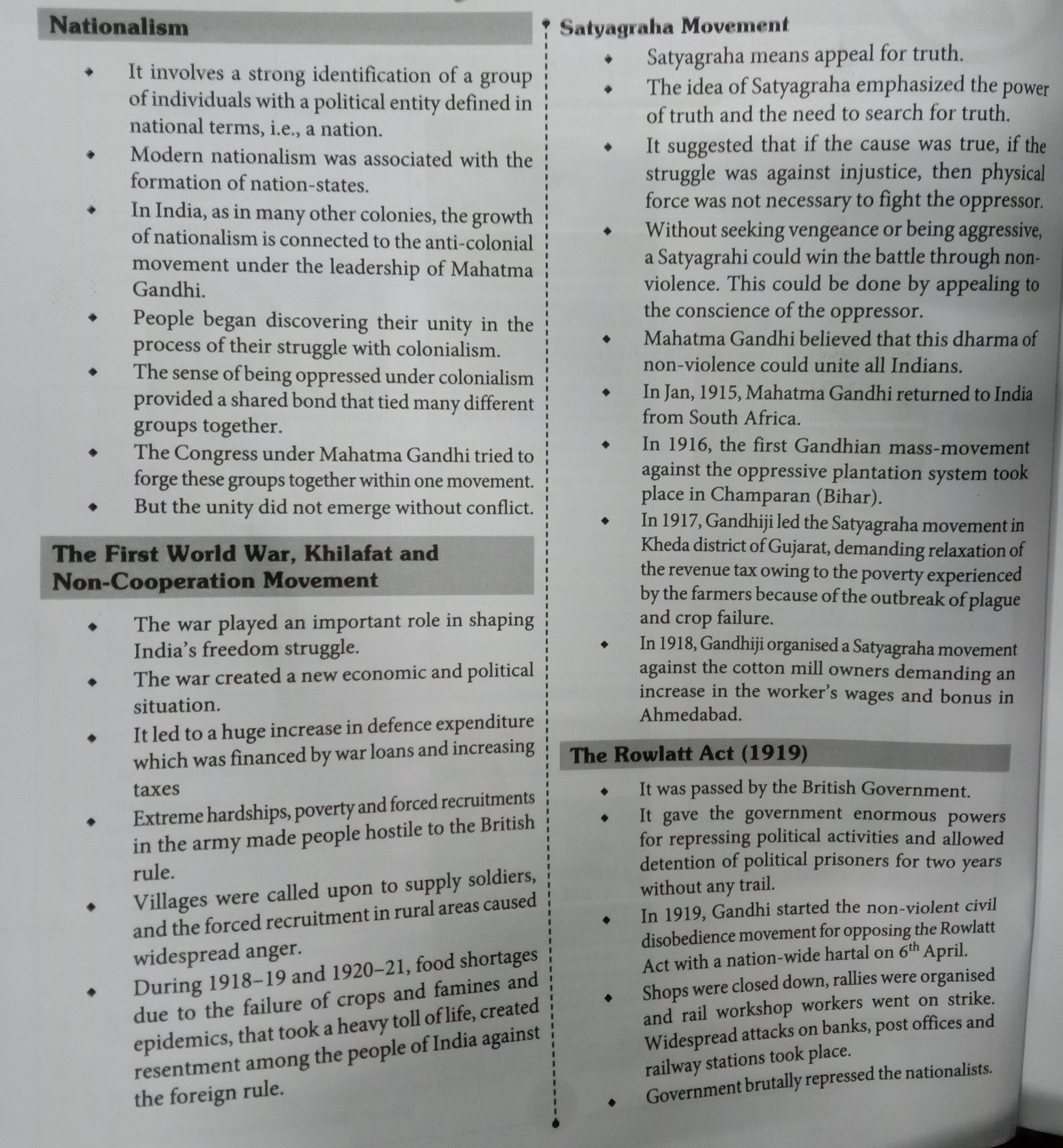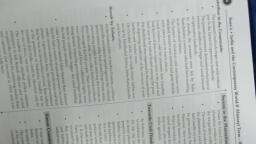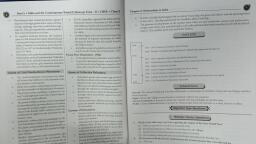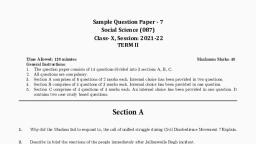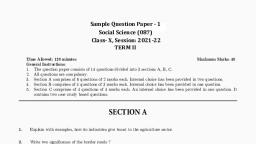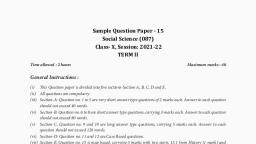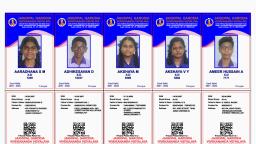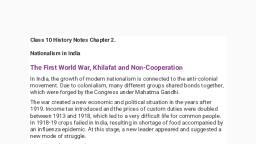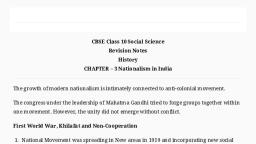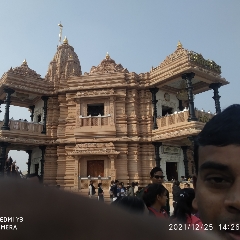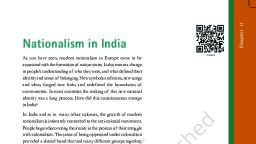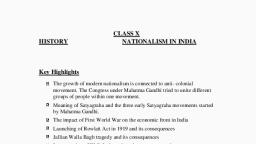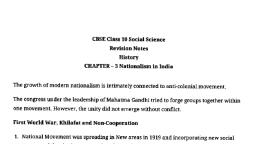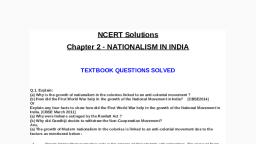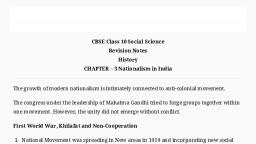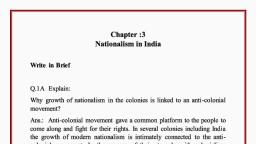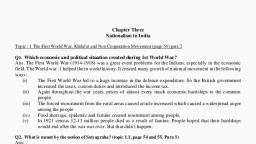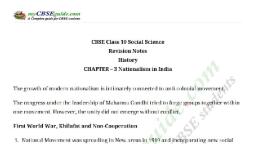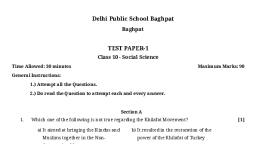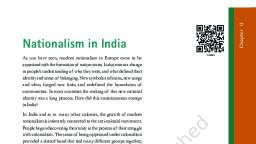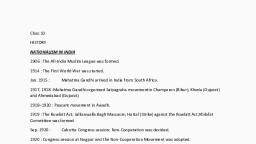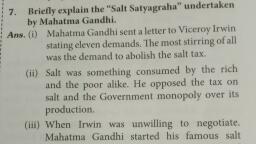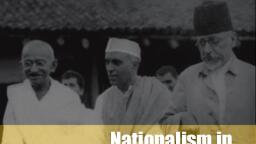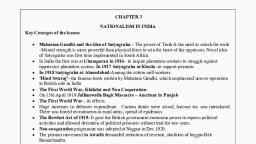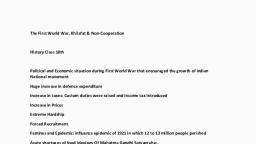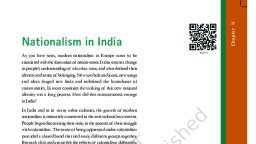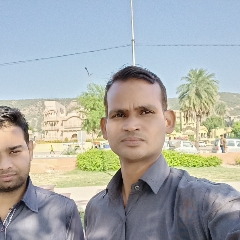Page 1 :
Natismat, , It involves a strong identification of a group, of individuals with a political entity defined in, national terms, i.e., a nation., , Modern nationalism was associated with the, formation of nation-states., , In India, as in many other colonies, the growth, of nationalism is connected to the anti-colonial, movement under the leadership of Mahatma, Gandhi., , People began discovering their unity in the, process of their struggle with colonialism., The sense of being oppressed under colonialism, provided a shared bond that tied many different, groups together., , The Congress under Mahatma Gandhi tried to, forge these groups together within one movement., But the unity did not emerge without conflict., , , , The war played an important role in shaping, India’s freedom struggle. ., The war created a new economic and political, situation., , It led to a huge increase in defence expenditure, which was financed by war loans and increasing, taxes, , Extreme hardships, poverty an, in the army made people h, rule., , Villages were calle, and the forced recrul, , widespread anger. on joo, During 1918-19 and 1920-21, f, , due to the failure of crops oO, epidemics, that took a heavy i, resentment among the, the foreign rule., , d forced recruitments, ostile to the British, , d upon to supply soldiers,, , tment in rural areas ca, , , , , , , , , , Satyagraha Movement, Satyagraha means appeal for truth., The idea of Satyagraha emphasized the power, of truth and the need to search for truth. |, It suggested that if the cause was true, if the, struggle was against injustice, then ph, force was not necessary to fight the oppresso, Without seeking vengeance or being agg:, a Satyagrahi could win the battle through, violence. This could be done by appez, the conscience of the oppressor., Mahatma Gandhi believed that this dharma, non-violence could unite all Indians., In Jan, 1915, Mahatma Gandhi returned, from South Africa., In 1916, the first Gandhian mass-m, against the oppressive plantation sys, place in Champaran (Bihar)., In 1917, Gandhiji led the Satyagraha movemer, Kheda district of Gujarat, demanding relaxation, the revenue tax owing to the poverty experience, by the farmers because of the outbreak of plague, and crop failure., , against the cotton mill owners demanding an, increase in the worker’s wages and bonus in, Ahmedabad., , ¢ — It was passed by the British Government., It gave the government enormous powers, for repressing political activities and allowed, detention of political prisoners for two years, without any trail. a, In 1919, Gandhi started the non-violent civil, disobedience movement for opposing the Rowlatt, Act with a nation-wide hartal on 6" April., chaps were closed down, rallies ee “a, poet rkers went on :, ee om aces tees, post officesand, Sat an : lace., , ie ee the nationalists., , 4, , +, , , , , , , , , , , , , , , , , , , , , , , , , °
